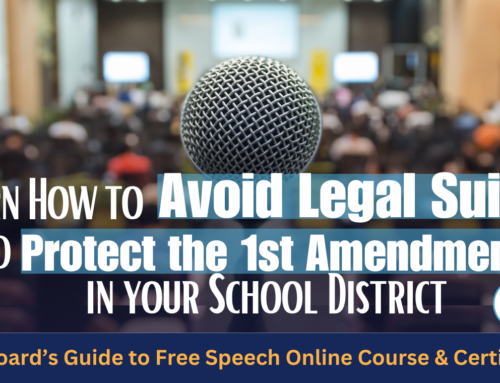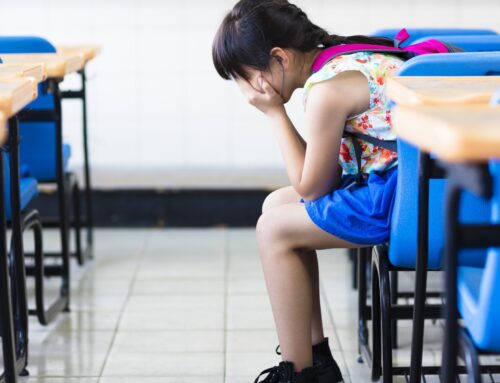
Picture this: you’re a teacher and it’s testing time.
Students are hushed, absorbed in their exams, when “wham!” Part of the ceiling drops and nearly hits you. You leap back and wonder what’s next to fall.
World War II air raid or crumbling Philadelphia public school?
The latter.
Nationwide, there’s a $500 billion backlog in school maintenance and repair projects, and collapsing ceilings aren’t the only issue. There’s peeling lead paint, mold, and people developing unexplained rashes from simply spending time in their school. Teachers and students don’t feel safe.
But some teachers keep coming back.
“The truth is, no, I don’t feel comfortable being in there, and I spend most of my days in there,” said Daniel Peou, principal of Horace Furness High School in Philadelphia. “But at the same time, I don’t want [students] to be home. I want them to be here. This is where they get their education.”
Even if your school isn’t in such dire straits, you may have experienced something similar. Education costs money. And sometimes there’s not enough money. Consequences range from firing teachers to buildings falling apart.
Other times, there is enough money. It’s just not being used effectively.
You can’t always control whether your school has enough money, but you can have a say in what’s done with existing funds. Paying attention to your school’s annual budget and voting for fiscally-responsible elected officials are two ways you can make sure more money goes where it counts. Here’s why you should:
It’s About Your Child’s Future
Where your child is headed in life is a big deal to you.
What and how they learn now shapes their future opportunities. Your school’s budget can indicate whether the school’s priorities for students align with your priorities for your child. Budget allocations can also alert you to changing needs within the school—or even indicate some surprising realities. Jim Bencivenga says, “A tripling of the drug education budget and a halving of the speech-and-debate budget say more about the challenges facing today’s students than any TV docudrama.”
Class Size
Budget influences class size.
Research indicates that class size impacts students’ “academic performance, behavioral and disciplinary formation, and important student-teacher relationships.” Whatever your preferred student-to-teacher ratio is, the school budget has the potential to shift it.
These shifts alter your child’s learning experience. “When states and municipalities cut their per-pupil funding rates, they often lower the number of educators they hire in the school. The natural result of this strategy is that the teachers lead larger classes.”
For more about the influence of class size on your child’s learning, check out our article “Does Class Size Impact Student Outcomes?”
Resources
Once teachers are in the classroom, the budget influences the resources they use to teach your children.
Did you know that 94 percent of teachers spend their own money to buy necessary supplies and resources for their classrooms? A survey by the National Center for Education Statistics found that, “On average, a teacher will shell out about $479, although 7 percent spent more than $1,000.”
Whether these expenditures are due to insufficient funds or poorly managed funds is not always clear. The same can be said for your school’s sports programs, field trip opportunities, or facilities. Education experts have been concerned for a while that the huge amount of money spent on education in the U.S. fails to produce equally-impressive learning outcomes.
By familiarizing yourself with your school budget, you may be able to suggest changes that will influence better student learning.
You Have Something To Add
Your voice matters. As a parent, you see the outcome of the school’s priorities in your child’s growth. This means you’re specially equipped to provide valuable feedback on whether the school’s financial choices further your priorities for your child.
Schools not only shape cognitive skills in students, but non-cognitive as well. As an involved parent, you’re in the best position to gauge how the school is doing as you see the daily nuances of your child’s growth.
For example, in Florida, “as many as 80 percent of the sixth-, seventh- and eighth-graders in some Central Florida schools are skipping the state’s P.E. requirement.” This began after the Florida Legislature added an opt-out clause allowing kids to skip physical education classes with a parental waiver.
Apparently, parents and kids wanted something else.
In many cases, the kids took fine arts courses instead. In the case of Florida student Olivia Fagan, a chorus class filled the opening created by her P.E. opt-out. Her mom said taking PE would have been a loss for Olivia since she already takes ballet, walks, and bikes with her family. Taking P.E. would have meant skipping chorus and paying for private music lessons, which wouldn’t have been financially feasible for her family.
Next time you’re wondering whether your perspective matters, use your voice and your vote to help shape the school budget! Maybe you’ll save your school the cost of backing a program no one wants.
You never know how many other parents share your perspective until you say something.
Not sure how to spread your thoughts in the community? Here are a few ways you can alert other concerned parents to school issues.
It’s Your Money At Stake
Naturally, you have a vested interest in where your tax dollars go.
Recent estimates say that state governments contribute about 48% of annual public education budgets. This includes funds from income taxes, corporate taxes, sales taxes, and fees. Local governments, which collect primarily local property taxes, contribute around 44%.
How you treat your money says something to your kids. If you leave the voting to everyone else, your children may never know that this privilege and responsibility will be theirs one day. But if they see you investing time in the financial side of their education, they’ll learn to do the same for their kids.
It’s only right that you have a say in how your money is used!
Showing Up Makes A Difference
One vote may not turn an election if you’re the only one staying home from the polls. But, add a few more people who don’t go out to vote, and it starts to matter very quickly. In New York state, statistics show that “of the more than 11.7 million registered voters in the state, only 647,335 voted on last year’s school budgets. That is a paltry 5.54 percent.”
If the remaining 11 million who did not vote had wanted to make a difference on a particular budget topic, they certainly had the manpower to!
Next time you’re wondering whether you should use your voice, think of yourself as one of the 11 million who could have turned the tide. Get out and vote, whether it’s directly for the budget or for those who make spending decisions for your schools.
How else will the budget reflect the education you truly want for your child?





[…] Researching and understanding aspects like the school budget […]